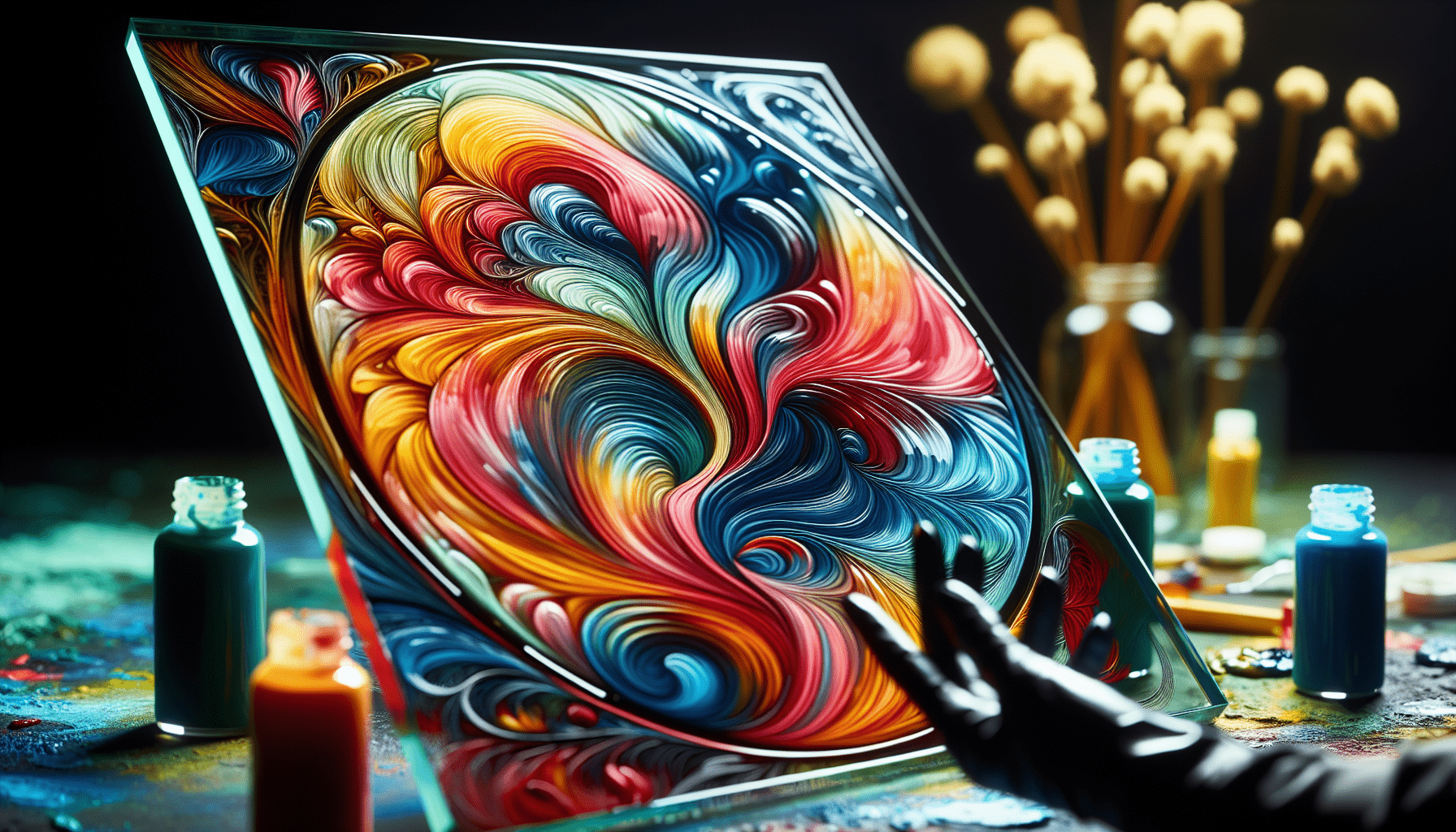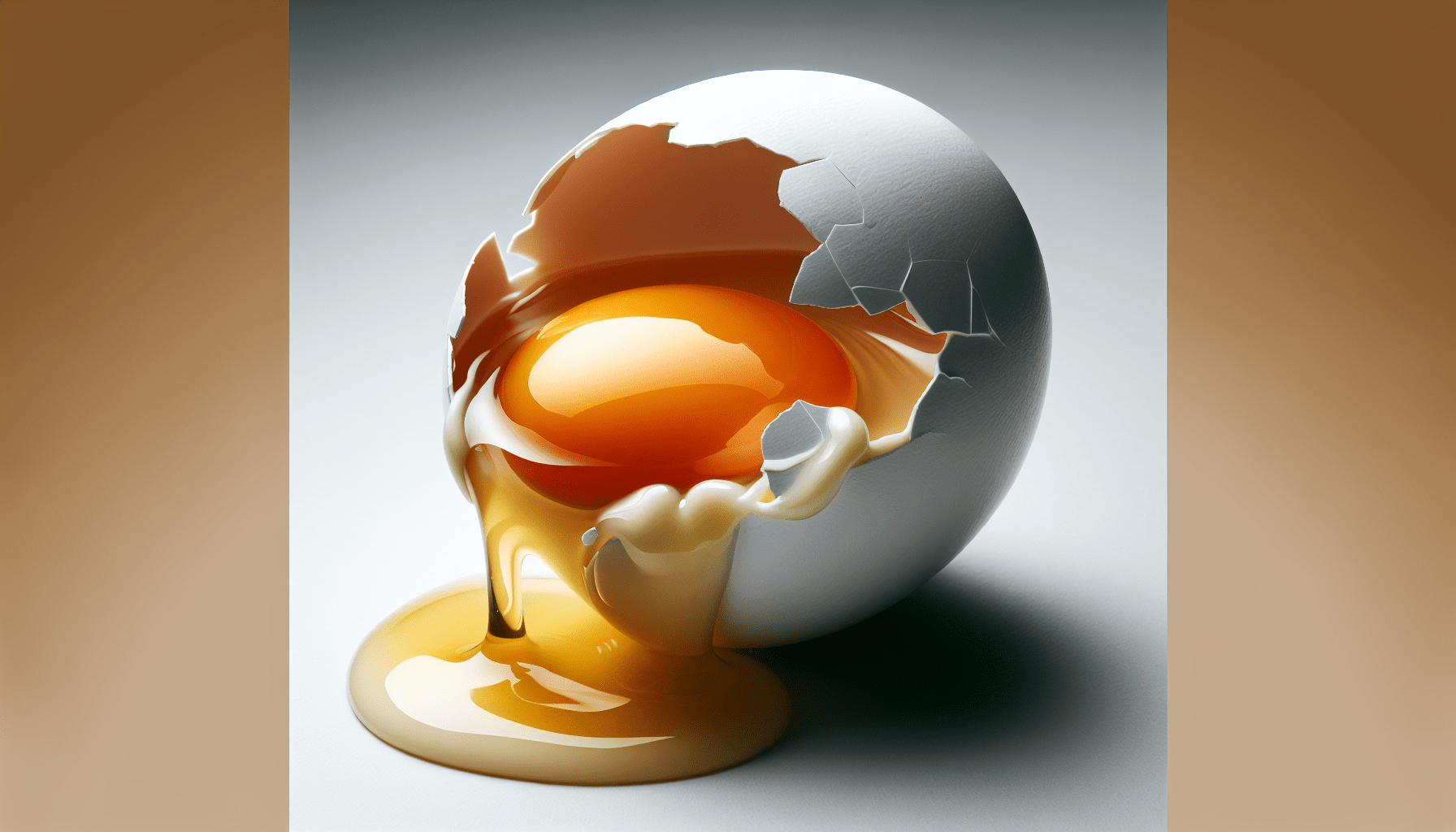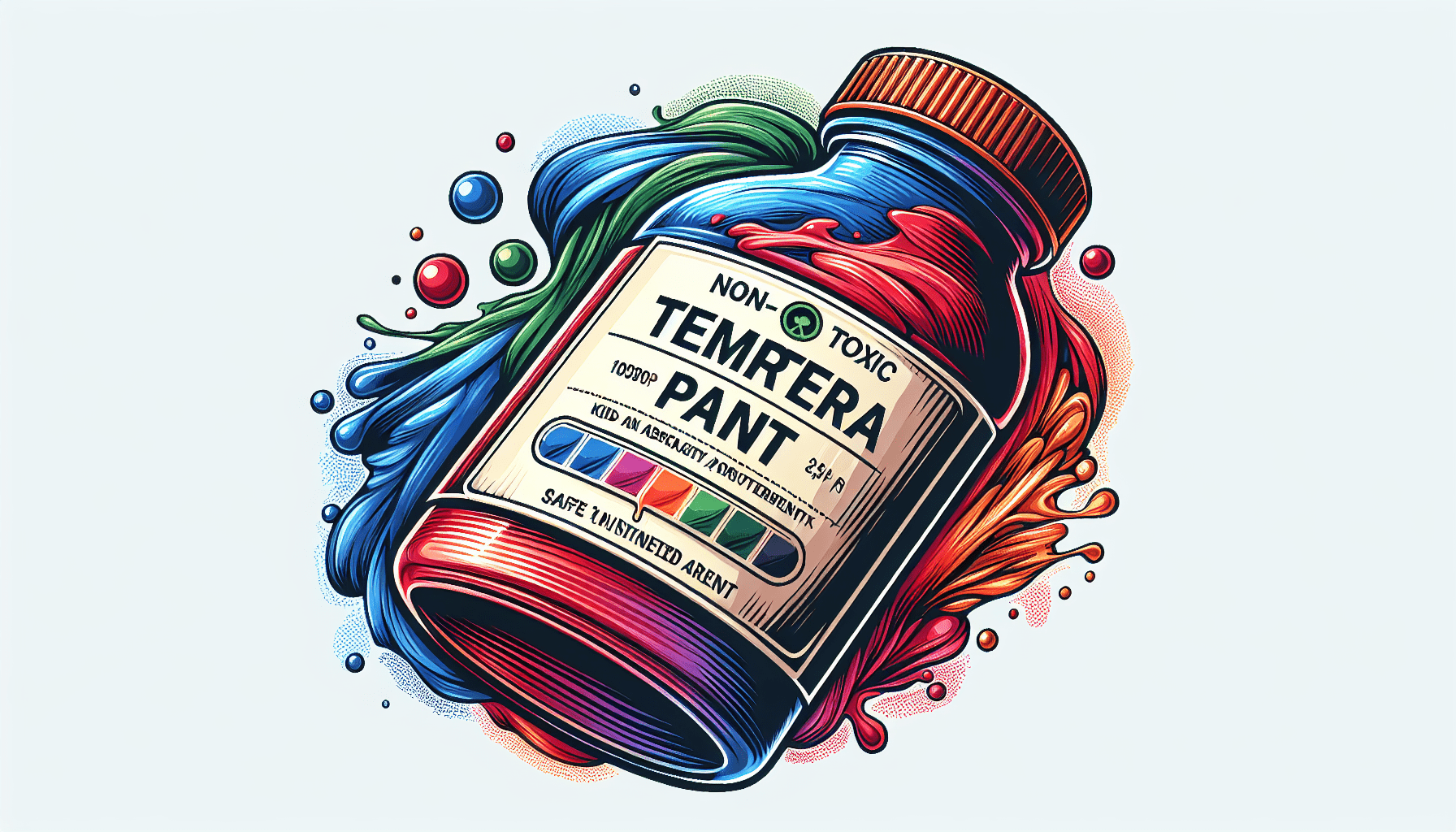Thickening tempera paint can be a useful technique for artists looking to create textured and vibrant artwork. Whether you’re working on canvas, paper, or any other surface, the ability to manipulate the consistency of your paint allows for greater control and expression in your artwork. In this article, you will discover effective methods and techniques on how to thicken tempera paint, enabling you to add depth and dimension to your creations.
What is Tempera Paint
Definition
Tempera paint, also known as egg tempera, is a type of paint that utilizes egg yolk as its binding medium. It has been used for centuries and is renowned for its vibrant colors and long-lasting quality. The name “tempera” originates from the Latin word “temperare,” meaning to mix or blend. This alludes to the process of carefully combining pigments, binders, and other additives to create this unique paint.
Composition
Tempera paint is composed of three main ingredients: pigments, a binding agent (usually egg yolk), and water. The pigments are finely ground colored particles that provide the paint with its vibrant hues. The binding agent, typically egg yolk, acts as the glue that holds the pigments together and adheres them to the painting surface. Water is added to adjust the consistency and flow of the paint.
Properties
Tempera paint boasts several notable properties that make it a popular choice among artists. It dries quickly, allowing for efficient layering and highlighting techniques. It produces a matte finish, which can be aesthetically pleasing for various artistic styles. Additionally, tempera paint is known for its exceptional color permanence, ensuring that artworks created with this medium can withstand the test of time.
Reasons for Thickening Tempera Paint
Achieving desired consistency
Thickening tempera paint can be advantageous when artists desire a specific consistency for their artwork. By thickening the paint, you have greater control over the flow and brushstrokes, allowing for more textured and detailed effects. Whether you prefer a thicker consistency for impasto techniques or a smoother consistency for delicate brushwork, thickening tempera paint can help you achieve the desired result.
Creating texture
One of the key reasons for thickening tempera paint is to create texture on the painting surface. Artists often use impasto techniques, which involve applying thick layers of paint to create a three-dimensional effect. Thickening the paint allows for more pronounced brushstrokes and texture, enhancing the overall visual impact of the artwork.
Increasing opacity
Another benefit of thickening tempera paint is the ability to increase its opacity. Opacity refers to the paint’s ability to conceal the underlying layers and create a solid, opaque color. By thickening the paint, you can achieve a higher level of opacity, allowing for more vibrant and intense colors. This is particularly useful when covering mistakes or achieving a bolder color in certain areas of the artwork.

Methods to Thicken Tempera Paint
Using thickening agents
One common method to thicken tempera paint is by incorporating thickening agents into the paint mixture. Thickening agents are substances that increase the viscosity or thickness of a liquid. When added to tempera paint, they enhance its consistency and create a thicker paint film. Some commonly used thickening agents for tempera paint include gelatin, cornstarch, flour, and modeling paste.
Mixing with a denser medium
Another approach to thickening tempera paint is by mixing it with a denser medium. Utilizing mediums such as oil pastels, oil sticks, or mixing white can help increase the thickness of the paint. These mediums contain a higher concentration of binders and pigments, thus adding density to the paint. Mixing with a denser medium not only thickens the paint but also alters its texture and visual appearance.
Reducing water content
A simple yet effective method to thicken tempera paint is by reducing the water content. Water is added to tempera paint to adjust its flow and consistency. By decreasing the amount of water added, the paint becomes thicker and more opaque. This method allows for greater control over the paint’s consistency, providing artists with the ability to achieve their desired thickness.
Thickening Agents for Tempera Paint
Gelatin
Gelatin is a natural thickening agent that can be used to thicken tempera paint. To use gelatin, it must be dissolved in warm water before being added to the paint mixture. Gelatin helps create a thicker consistency while maintaining the paint’s adhesive properties. It is important to follow the appropriate measurements and ratios when using gelatin to ensure the desired effect.
Cornstarch
Cornstarch, a commonly found household ingredient, can also be used as a thickening agent for tempera paint. To utilize cornstarch, it should be mixed with water to form a solution before being added to the paint. The cornstarch solution thickens the paint and allows for a more substantial application. However, it is crucial to ensure that the ratio of cornstarch to water is appropriate to avoid clumps or uneven consistency in the paint.
Flour
Flour, another readily available ingredient, can be used as a thickening agent for tempera paint. By creating a flour paste, artists can achieve a desired thicker consistency. The flour should be mixed with water to form a paste-like texture before being added to the paint. It is essential to mix the flour paste thoroughly into the paint to avoid any lumps or inconsistent texture.
Modelling paste
Modelling paste, a specialized thickening agent for artistic mediums, can also be used to thicken tempera paint. Modelling paste is a dense, creamy substance that is traditionally used in sculpture and modeling techniques. Adding modeling paste to the tempera paint not only thickens the mixture but also adds a unique texture to the finished artwork. It is advisable to mix the modeling paste with the paint thoroughly to achieve a homogeneous mixture.

Procedure: Using Gelatin
Materials needed
- Tempera paint
- Gelatin
- Warm water
- Mixing container
- Stirring utensil
Step 1: Dissolving gelatin
In a mixing container, add a small amount of warm water. Sprinkle the gelatin over the warm water, allowing it to dissolve. Stir the mixture gently until the gelatin is fully dissolved.
Step 2: Adding gelatin to paint
Once the gelatin is completely dissolved, slowly add it to the tempera paint. Stir the mixture thoroughly, ensuring that the gelatin is evenly incorporated. Continue stirring until the desired thickness is achieved. Add more gelatin if a thicker consistency is desired.
Procedure: Using Cornstarch
Materials needed
- Tempera paint
- Cornstarch
- Water
- Mixing container
- Stirring utensil
Step 1: Creating cornstarch solution
In a mixing container, combine cornstarch and water in a ratio of 1:1. Stir the mixture vigorously until the cornstarch is fully dissolved, and a smooth solution is achieved.
Step 2: Adding cornstarch solution to paint
Slowly add the cornstarch solution to the tempera paint, stirring continuously. Ensure that the solution is thoroughly mixed into the paint, without any clumps or uneven consistency. Adjust the amount of solution added based on the desired thickness of the paint.
Procedure: Using Flour
Materials needed
- Tempera paint
- Flour
- Water
- Mixing container
- Stirring utensil
Step 1: Creating flour paste
In a mixing container, mix flour and water to create a paste-like consistency. Stir the mixture thoroughly until you achieve a smooth and homogeneous paste, without any lumps.
Step 2: Adding flour paste to paint
Slowly add the flour paste to the tempera paint, stirring continuously. Ensure that the paste is thoroughly mixed into the paint, avoiding any clumps or inconsistent texture. Adjust the amount of flour paste added according to the desired thickness.
Procedure: Using Modelling Paste
Materials needed
- Tempera paint
- Modelling paste
- Mixing container
- Stirring utensil
Step 1: Mixing modelling paste with paint
Add the desired amount of modelling paste to the tempera paint in a mixing container. Stir the mixture vigorously, ensuring that the modeling paste is evenly incorporated into the paint. Continue stirring until the desired thickness and texture are achieved.
Mixing with a Denser Medium
Oil pastels
Mixing tempera paint with oil pastels can result in a thicker paint consistency. Oil pastels have a high concentration of pigments and binders, which contribute to their dense nature. By combining oil pastels with tempera paint, you can achieve a thicker consistency while adding depth and richness to the colors.
Oil sticks
Similar to oil pastels, oil sticks can be mixed with tempera paint to create a denser medium. Oil sticks offer a high pigment concentration, resulting in vibrant and intense colors. Mixing oil sticks with tempera paint not only thickens the mixture but also imparts a luscious and glossy appearance to the finished artwork.
Mixing white
Mixing white, a denser and more opaque form of white acrylic paint, can also be used to thicken tempera paint. The addition of mixing white enhances the opacity and body of the paint, resulting in a thicker and more substantial consistency. It is essential to mix the mixing white thoroughly into the tempera paint to achieve a homogeneous mixture.
Reducing Water Content
Allowing paint to dry out
One way to thicken tempera paint is by allowing it to naturally dry out. By exposing the paint to air and allowing the water content to evaporate, the paint gradually thickens. This method requires patience and time, as the drying process can take several hours or even days, depending on the thickness of the paint layer.
Evaporating water with a hairdryer
To expedite the drying process, a hairdryer can be used to evaporate the water content in tempera paint. By directing the warm air towards the wet paint, the water evaporates, resulting in a thicker consistency. Artists should take care to use low heat settings and maintain a suitable distance to prevent overheating or damage to the painting surface.
In conclusion, there are several methods available for thickening tempera paint, each offering unique effects and advantages. Whether using thickening agents like gelatin, cornstarch, flour, or modeling paste, or experimenting with denser mediums such as oil pastels, oil sticks, or mixing white, artists can achieve their desired consistency, texture, and opacity. Additionally, reducing the water content through natural drying or using a hairdryer can also effectively thicken tempera paint. By exploring these techniques, artists can elevate their artwork and unleash their creativity with this versatile medium.



